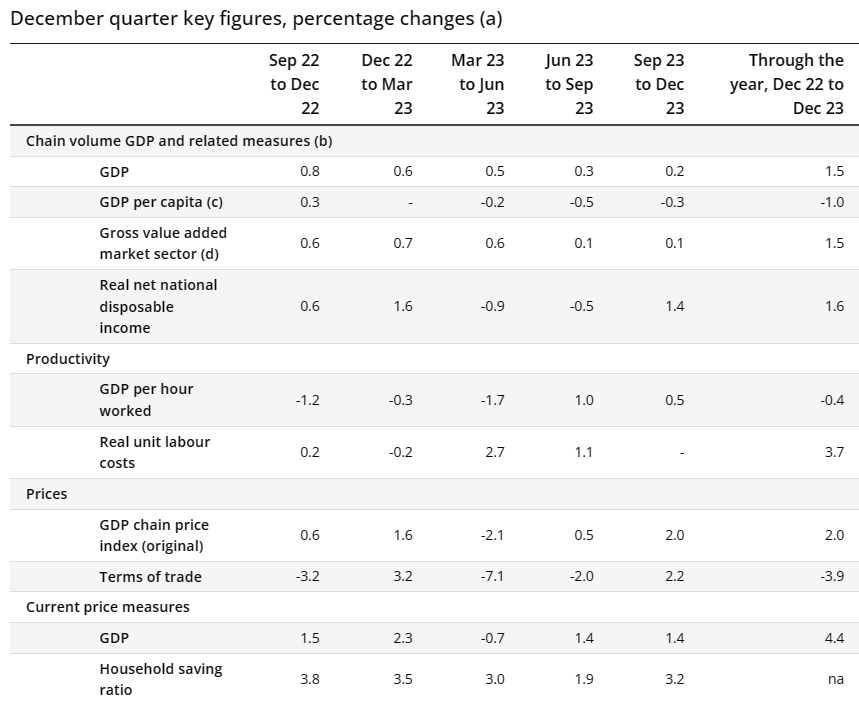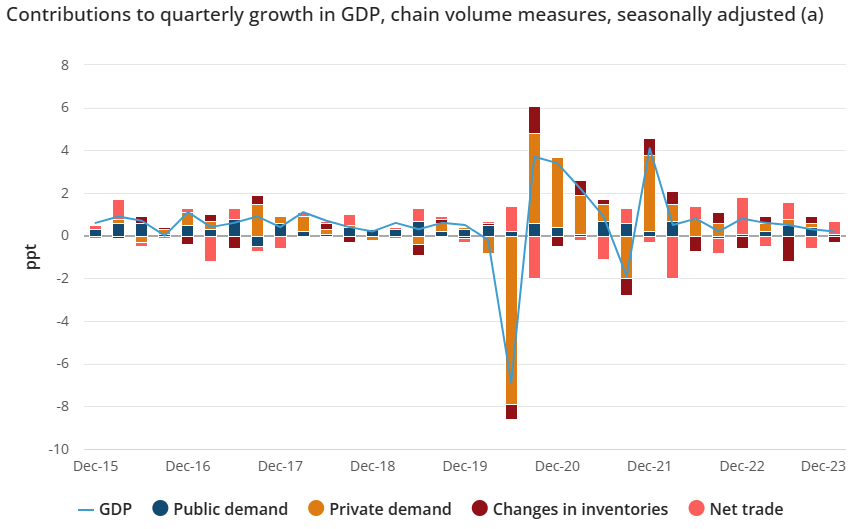The Australian Bureau of Statistics (ABS) released the national accounts for the December quarter, which recorded aggregate GDP growth of only 0.2%, below economists’ and RBA expectations of 0.3% growth.
Over the year, the nation’s GDP grew by only 1.5%.

Source: ABS
Government spending continued to drive growth:
Domestic final demand contributed just 0.1 percentage points to GDP growth, driven by consumption.
Consumption contributed 0.2 percentage points to growth. Government consumption rose 0.6% to be 2.7% higher through-the-year. Household expenditure (+0.1%) had a small rise.
Investment detracted 0.1 percentage points from GDP growth, with both private (-0.2%) and public investment (-0.2%) falling over the quarter.
Changes in inventories detracted 0.3 percentage points from growth, recording a $2.7 billion run down in the December quarter.
Mining inventories declined as coal inventories were run down to meet rising international demand. Wholesale Trade inventories also experienced a run-down driven by weaker grain production.

Source: ABS
Australian households hammered:
The next chart shows that GDP per capita fell by 1.0% in 2023:

Of most importance, Australian households continue to go backwards at a rate of knots.
The next chart shows that real per capita household final consumption plunged by 2.5% in 2023, which drove the 0.3% annual decline in per capita final demand:

Clearly, Australian households are faring worse than the broader economy and are mired in recession.

